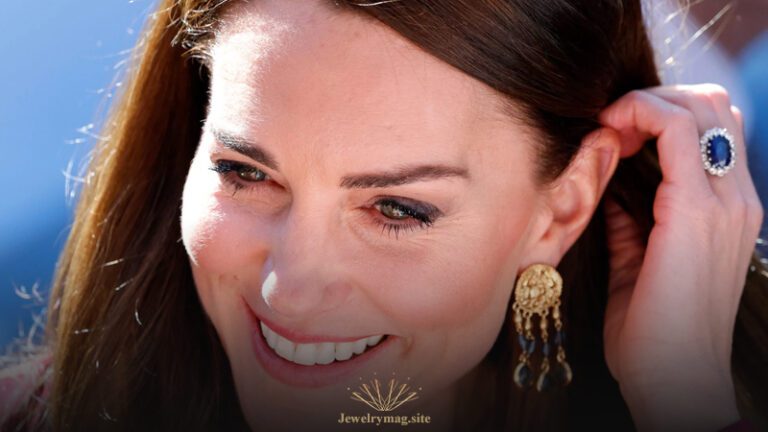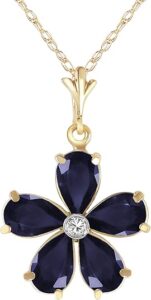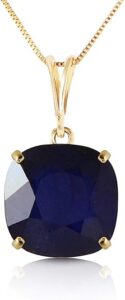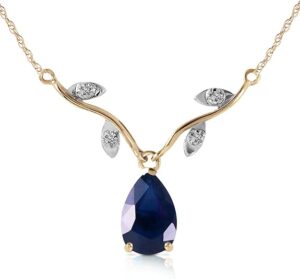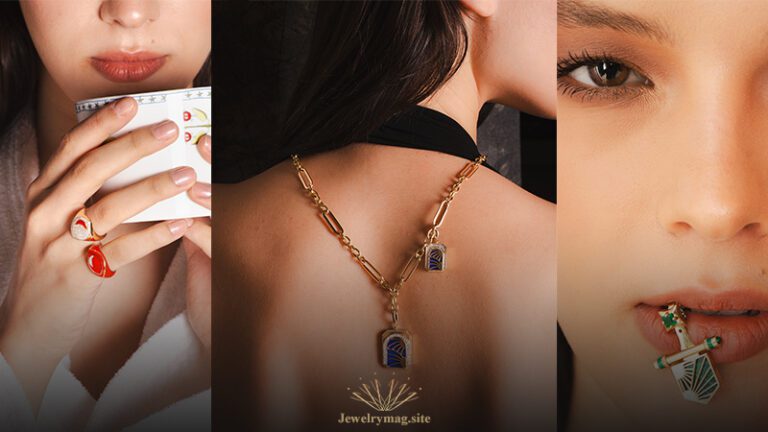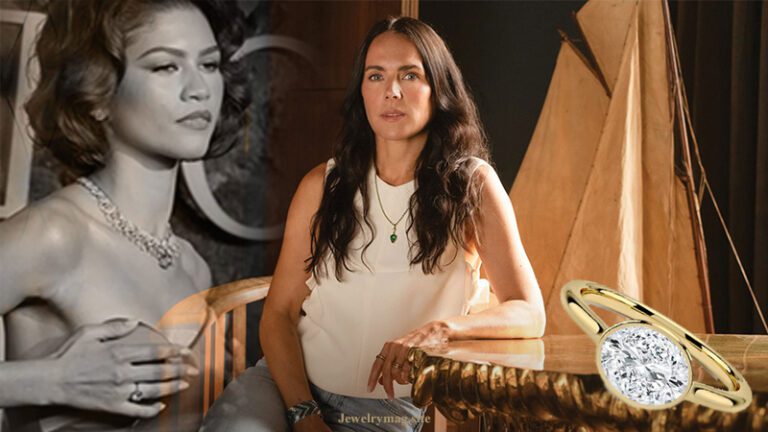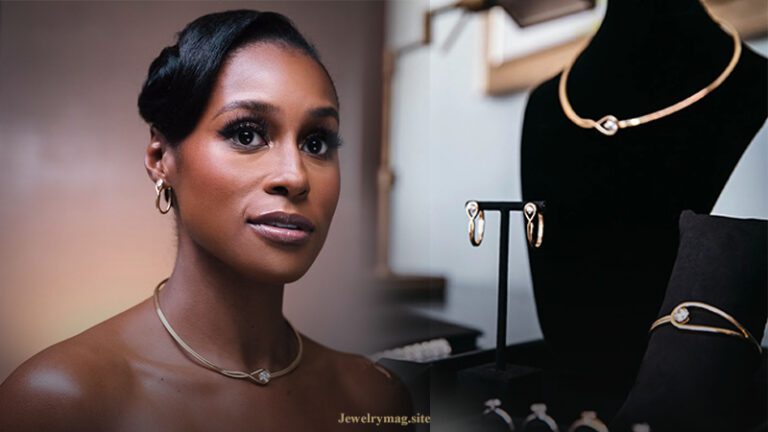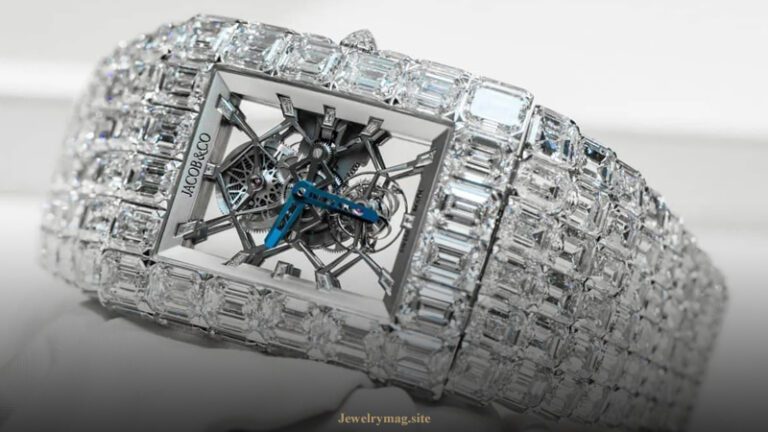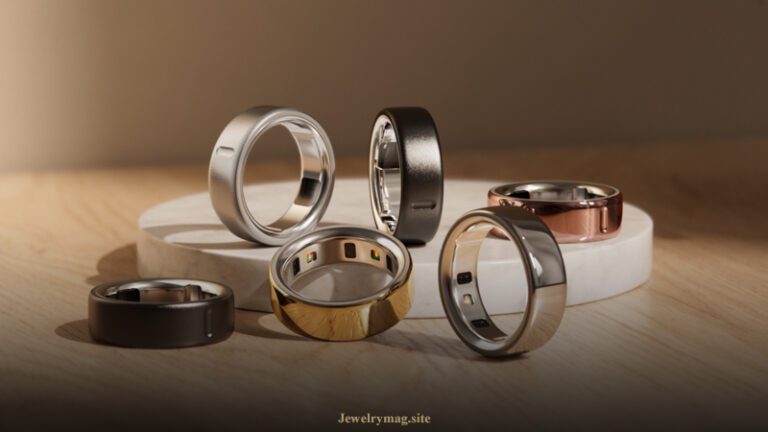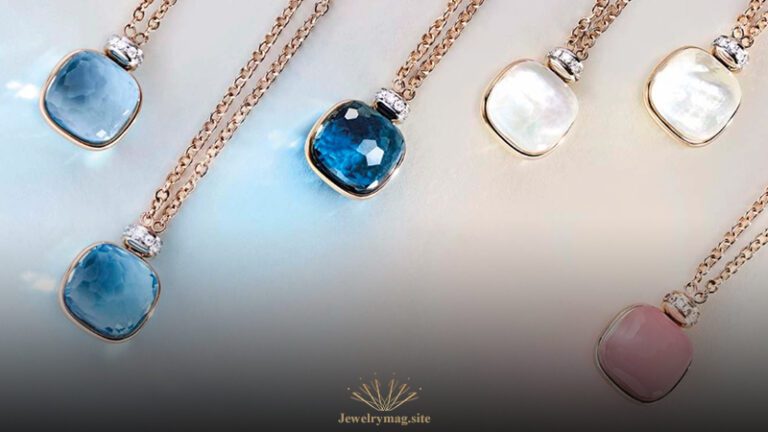Blue sapphires have captivated people for centuries with their deep, velvety hue and air of timeless elegance. Known as the gemstone of wisdom, royalty, and divine favor, natural blue sapphires are not only beautiful but also rich in history and cultural symbolism.
Sapphires are a variety of the mineral corundum, composed primarily of aluminum oxide. While sapphires come in nearly every color of the rainbow, it is the blue sapphire that stands out as the most iconic and coveted. The rich blue color is caused by trace elements of iron and titanium within the crystal structure.
The term “sapphire” is most often associated with this blue variety, which ranges in tone from pale blue to deep royal blue, with the finest quality often described as “cornflower blue.”
A Royal Legacy
Perhaps the most famous sapphire in modern times is Princess Diana’s engagement ring, which now belongs to Kate Middleton, Princess of Wales. The 12-carat Ceylon sapphire surrounded by diamonds has become a global symbol of regal elegance and is responsible for a renewed interest in sapphire engagement rings.
Blue sapphires have long been associated with royalty, nobility, and religious symbolism. Ancient Persian rulers believed the sky itself was painted blue by the reflection of sapphire stones. In medieval Europe, clergy members wore sapphires to symbolize heaven, while royalty believed the gem protected them from envy and harm.
From royal engagements to red carpet moments, this precious gemstone has captivated hearts across the globe — especially when worn by iconic celebrities. If you’ve ever wondered how the stars style sapphires, here are 5 unforgettable moments when blue sapphires took center stage.
1. Princess Diana (and Kate Middleton) – The Iconic Sapphire Engagement Ring
It all started with the most famous sapphire in the world. In 1981, Princess Diana received a 12-carat Ceylon blue sapphire ring surrounded by 14 solitaire diamonds — set in 18k white gold. This now-iconic ring captured the world’s imagination and became a symbol of royal elegance.
Fast forward to 2010, and the ring made headlines again when Prince William proposed to Kate Middleton with the same piece, keeping Diana’s legacy alive. It remains one of the most recognized sapphire pieces in history — and a major reason for the stone’s modern popularity.
2. Elizabeth Taylor – The Bulgari Sapphire Brooch
Hollywood legend Elizabeth Taylor had a passion for bold and luxurious jewelry, and sapphires were no exception. One standout piece was a stunning sapphire and diamond brooch gifted to her by Richard Burton in the 1960s. The vivid blue cabochon sapphire, paired with dazzling diamonds, became one of her most cherished items.
Taylor often wore the brooch on her gowns at galas, proving that sapphires are not just fit for royalty — but for red carpet royalty too.
3. Penélope Cruz – Vintage Glamour at the Oscars
At the 2009 Academy Awards, Penélope Cruz stepped onto the red carpet in a vintage Balmain gown paired with jaw-dropping sapphire drop earrings. The deep blue gems perfectly contrasted her ivory lace dress and classic Hollywood styling.
The result? One of the most elegant looks of the decade. Penélope’s sapphire earrings made headlines and reminded the world how powerful a well-chosen gemstone can be.
4. Naomi Campbell – Blue Sapphire Statement Necklace
Supermodel Naomi Campbell is known for making bold fashion statements, and her love for luxury is no secret. At a Cannes Film Festival event, she wore a striking blue sapphire necklace encrusted with diamonds that framed her face beautifully and added a royal vibe to her sleek gown.
Her look was proof that sapphires aren’t just delicate — they can be fierce, bold, and runway-ready.
5. Victoria Beckham – Blue Sapphire Engagement Ring (One of Many!)
Fashion icon Victoria Beckham has a collection of engagement rings, and one of the most talked-about is a large blue sapphire set in platinum. Her love for unique gemstone rings reflects her trendsetting style — always ahead of the curve, always stunning.
Victoria’s take on sapphires is modern, edgy, and full of personality — a great reminder that sapphires work beautifully with contemporary designs, not just vintage.
Wear Your Own Royal Sparkle
From princesses to pop culture queens, blue sapphires have proven they’re more than just a pretty gemstone — they’re a statement of grace, strength, and timeless style.
Whether you’re inspired by Diana’s romance, Naomi’s bold glam, or Penélope’s vintage elegance, you can bring sapphire magic into your own collection.
Check out the latest natural blue sapphire collection from Galaxy Gold:
Symbolism & Spiritual Meaning
Blue sapphires aren’t just physically beautiful — they carry deep spiritual and cultural meanings:
-
Wisdom and Intuition – Ancient cultures believed sapphires enhanced insight and mental clarity.
-
Protection – Worn by kings and priests to guard against evil and bad luck.
-
Love and Commitment – Represents faithfulness, making it a meaningful engagement stone.
-
Astrology and Chakras – In Vedic astrology, blue sapphire (Neelam) is linked to Saturn (Shani) and is believed to bring discipline, focus, and prosperity when worn correctly. It’s also associated with the throat chakra, promoting self-expression and communication.
Are Natural Blue Sapphires Valuable?
Yes — and incredibly so. The value of a blue sapphire depends on several factors:
-
Color – The most prized sapphires display a rich, vivid blue with excellent saturation and even color distribution.
-
Clarity – Natural sapphires often contain inclusions, but those with minimal visible flaws are highly desirable.
-
Cut – A well-cut sapphire enhances its brilliance and shows off its color.
-
Carat Weight – As with other gemstones, larger sapphires are rarer and more valuable.
-
Origin – Sapphires from Kashmir, Burma (Myanmar), and Sri Lanka (Ceylon) are considered the most valuable due to their exceptional color and quality.
For example, untreated Kashmir sapphires can command prices of over $50,000 per carat at auction.
Where Do Blue Sapphires Come From?
Blue sapphires are mined around the world, with key sources including:
-
Sri Lanka (Ceylon) – Known for bright, vibrant blue sapphires with great clarity.
-
Kashmir (India) – Rare and highly valuable; known for velvety, rich blue stones.
-
Myanmar (Burma) – Known for deep, intense blues.
-
Madagascar – A newer source producing high-quality stones at competitive prices.
-
Thailand, Australia, and the USA (Montana) – Also supply commercial-grade sapphires.
The origin can significantly impact the value and prestige of a sapphire.
Natural vs. Lab-Grown Sapphires
There is growing interest in lab-grown sapphires, which are chemically identical to natural sapphires but grown in controlled environments. They’re generally more affordable and sustainable, but don’t carry the same rarity or resale value as their natural counterparts.
Natural sapphires, especially those that are untreated, are rare and more valuable, but they can come at a significantly higher price.
How to Care for Blue Sapphires
Although sapphires are hard and durable, they still require some care to maintain their beauty.
Tips:
-
Clean with warm water, mild soap, and a soft brush.
-
Avoid ultrasonic cleaners if the stone is heavily included or fracture-filled.
-
Store separately to avoid scratching other jewelry.
Always check if your sapphire is heat-treated or enhanced, as some treatments may affect how it should be cleaned.
Fun Facts About Blue Sapphires
-
The name “sapphire” comes from the Latin word sapphirus and the Greek sappheiros, both meaning “blue.”
-
In ancient times, some believed sapphires could cure poison or detect lies.
-
The Star of India, one of the world’s largest sapphires, weighs over 500 carats and is housed in the American Museum of Natural History in New York.

